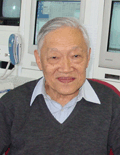 Ye Minghan He had served as director of IHEP (1984-1988), president of the Chinese High Energy Physical Society and president of the Nuclear Electronics and Nuclear Detecting Technologies. He was elected member of the Chinese Academy of Engineering in 1995. He is now full professor of IHEP and tutor of Ph.D students, as well as scientific director of the China Center of Advanced Science and Technology (CCAST).
Ye Minghan He had served as director of IHEP (1984-1988), president of the Chinese High Energy Physical Society and president of the Nuclear Electronics and Nuclear Detecting Technologies. He was elected member of the Chinese Academy of Engineering in 1995. He is now full professor of IHEP and tutor of Ph.D students, as well as scientific director of the China Center of Advanced Science and Technology (CCAST).
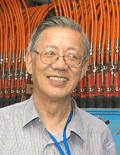 Fang Shouxian In the early 60s, he discovered the non-isochromatic phenomenon of isochromatic cyclotron and developed a dispersion suppress method suitable to small and medium-sized synchrotrons, thereby achieving world acknowledged success in developing accelerator technologies. He had served as project director of the Beijing Electron Positron Collider (BEPC) and director of the Institute of High Energy Physics. He was elected member of the Chinese Academy of Sciences (CAS). He was a member of the 8th and 9th National Political Consultative Conference.
Fang Shouxian In the early 60s, he discovered the non-isochromatic phenomenon of isochromatic cyclotron and developed a dispersion suppress method suitable to small and medium-sized synchrotrons, thereby achieving world acknowledged success in developing accelerator technologies. He had served as project director of the Beijing Electron Positron Collider (BEPC) and director of the Institute of High Energy Physics. He was elected member of the Chinese Academy of Sciences (CAS). He was a member of the 8th and 9th National Political Consultative Conference.
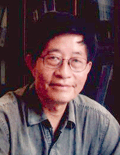 Li Tipei He was elected member of the Chinese Academy of Sciences. He is now full professor and tutor for Ph.D students of IHEP and also the chief scientist of “ Observation and Investigation of High Energy Radiation from the Space”, which is a major state basic research project. He proposed and organized the cosmic ray astrophysics and high energy astrophysics experiments and research in China. He set up the statistical model of the Galactic gamma rays in the early 80s.
Li Tipei He was elected member of the Chinese Academy of Sciences. He is now full professor and tutor for Ph.D students of IHEP and also the chief scientist of “ Observation and Investigation of High Energy Radiation from the Space”, which is a major state basic research project. He proposed and organized the cosmic ray astrophysics and high energy astrophysics experiments and research in China. He set up the statistical model of the Galactic gamma rays in the early 80s.
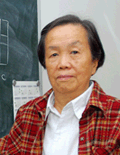
Zhang Zongye She was elected member of the Chinese Academy of Sciences. Now she is full professor and tutor of Ph. D. students of the Institute of High Energy Physics, the Chinese Academy of Sciences. She predicts theoretically the existence of super-symmetric structure states in hyper-nuclei. Those states were found later in the experiment at Brookhaven National Laboratory (BNL) in the United State of America. She systematically studied the quark model theory of the baryon and the two-baryon system.
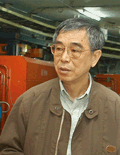 Chen Senyu He is an accelerator physicist, full professor of the Institute of High Energy Physics (IHEP), the Chinese Academy of Sciences (CAS) and tutor of Ph.D students. He is now technology supervisor of the Shanghai Synchrotron Radiation Facility Project, deputy director of the Beijing Electron Positron Collider National Laboratory and vice chairman of the Science Committee of IHEP, CAS.
Chen Senyu He is an accelerator physicist, full professor of the Institute of High Energy Physics (IHEP), the Chinese Academy of Sciences (CAS) and tutor of Ph.D students. He is now technology supervisor of the Shanghai Synchrotron Radiation Facility Project, deputy director of the Beijing Electron Positron Collider National Laboratory and vice chairman of the Science Committee of IHEP, CAS.
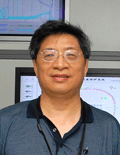
CHEN Hesheng Bachelor degree of Nuclear physics at Peking University 1970, and PhD of Physics at Massachusetts Institute of Technology 1984.Director and Professor of Institute of High Energy Physics, Chinese Academy of Sciences. Academician of Chinese Academy of Sciences. Research field: particle physics experiments. He worked at Mark-J Experiment of DESY for the gluon jet study and the precision tests of the electroweak theories from 1979 to 1984. Since 1982 he worked at the L3 experiment of CERN for the physics proposal and detector design, Monte Carlo simulation and Tau physics, and made contributions to the precision measurements of the Standard Model parameters and the number of the neutrino generations. Under his leadership, the AMS permanent magnet system was constructed in Beijing, and became the payload of the space shuttle Discovery 1998 as the first large magnet in Space. Since 2001, he was the project manager of the Beijing Electron Positron Collider Upgrade (BEPCII). BEPCII finished the construction on schedule within budget, and reached the design specification 2009. The luminosity of the BEPCII increased by a factor of more than 30 compared with the one before upgrade, and is a factor 4 more than the previous world record in the energy region.
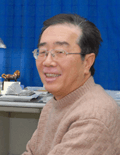 CHAI Zhifang He is a radioanalytical chemist working at Institute of High Energy Physics, the Chinese Academy of Sciences. He was graduated from Fudan University, China, in 1964. As a fellowship of the Alexander von Humboldt Foundation, Germany, he worked at Cologne University from 1980 to 1982 in the field of nuclear technology and its applications. Later,he worked in France, USA, the Netherlands and Japan. He has been long involved in methodology of nuclear analytical techniques and their multidisciplinary applications, especially in the neutron activation analysis for study of the chemical speciation of trace elements. He authored or co-authored over 332 papers in peer-review journals, 6 Chinese books and 3 English books in the field of nuclear analytical methods. He is a member of many domestic and international scientific societies. In 2005 he was awarded the George von Hevesy Award - the premier international award of excellence to honor outstanding achievements in radioanalytical and nuclear chemistry. In 2007 he was elected as a member of the Chinese Academy of Sciences.
CHAI Zhifang He is a radioanalytical chemist working at Institute of High Energy Physics, the Chinese Academy of Sciences. He was graduated from Fudan University, China, in 1964. As a fellowship of the Alexander von Humboldt Foundation, Germany, he worked at Cologne University from 1980 to 1982 in the field of nuclear technology and its applications. Later,he worked in France, USA, the Netherlands and Japan. He has been long involved in methodology of nuclear analytical techniques and their multidisciplinary applications, especially in the neutron activation analysis for study of the chemical speciation of trace elements. He authored or co-authored over 332 papers in peer-review journals, 6 Chinese books and 3 English books in the field of nuclear analytical methods. He is a member of many domestic and international scientific societies. In 2005 he was awarded the George von Hevesy Award - the premier international award of excellence to honor outstanding achievements in radioanalytical and nuclear chemistry. In 2007 he was elected as a member of the Chinese Academy of Sciences.
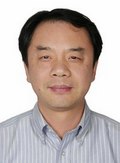 WANG Yifang born in 1963 at Jiangsu Province, obtained his B.Sc degree at Nanjing University in 1984, and Ph.D degree at University of Florence in 1991. He worked subsequently in MIT as a research staff and Stanford University as a research associate. He becomes a Professor at the Institute of High Energy Physics, Beijing, China in 2001.
WANG Yifang born in 1963 at Jiangsu Province, obtained his B.Sc degree at Nanjing University in 1984, and Ph.D degree at University of Florence in 1991. He worked subsequently in MIT as a research staff and Stanford University as a research associate. He becomes a Professor at the Institute of High Energy Physics, Beijing, China in 2001.
He is an author of more than 250 scientific papers on neutrino physics, e+e- collision physics, cosmic-ray and astrophysics, detector design and construction, methods for data analysis, covering his work in experiments of L3, AMS, Palo Verde, KamLAND and BES.
He led the effort at IHEP for the design and successful construction of the BESIII detector, first of its kind in China, and is elected as the spokesperson of this large international collaboration.
He proposed the Daya Bay neutrino oscillation experiment in China with a detailed detector design and experimental plan, to precisely measure the neutrino mixing angle theta13. He assembled a large international collaboration, and is elected as the co-spokesperson of the experiment.He was awarded the W. K. H. Panofsky Prize, the 20th Nikkei Asia Prize, and the Breakthrough Prize in Fundamental Physics.He was elected the Foreign Member of the Russia Academy of Sciences in 2016.


